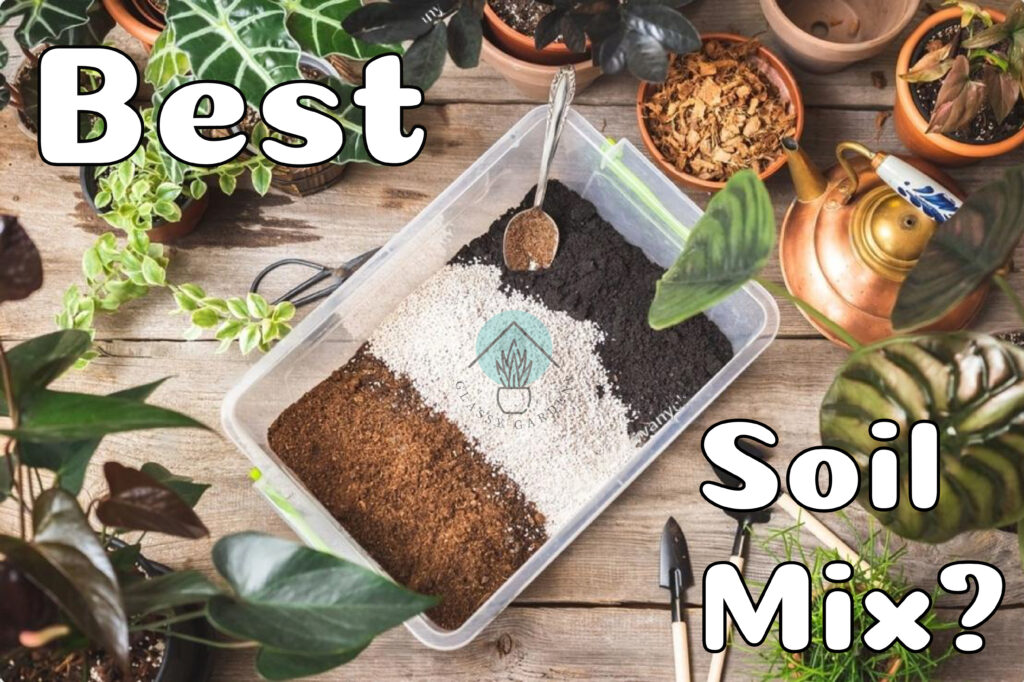
Regular potting mix There are a few different options available when it comes to selecting a soil mix for your terrarium soil. You can either choose to purchase a regular potting mix from a nursery or use soil from your backyard or garden. The right terrarium substrate is one of the three main pillars of building successful terrariums, along with enough light and correct watering. In this blog, I’m going to go in-depth about why it’s important to get the soil right.
One of the main guided principles when mixing up a terrarium substrate is that we want it to be airy. Why? Well, two reasons. One, roots need to breathe, and two, it’s nasty to have anaerobic soil in a terrarium. Classifying terrarium substrates into two categories, chunkies and fluffies, is a perfect way to explain how terrarium substrates work. Fluffies, such as coco coir, leaf mold, sphagnum moss, and good quality compost, are all soft, fluffy, fine-grained, or moldable so they can fill the spaces between the chunks and hold onto water nicely.
They do have a tendency to compact after a few months, so we add chunks to ensure that the soil stays nice and airy. Chunkies, the best of which are fine-grained and porous for water retention, are lava rock, pumice, akadama, molar clay, small leca, charcoal bits, fine orchid bark, and even fern bark bits. Perlite can work, but it’s white in color, and I’m generally not a big fan of it. Vermiculite, too, breaks down after a while, so I tend to avoid perlite and vermiculite. Worm castings are in a third category of their own because they’re neither chunky nor fluffy, but it’s really important to have them because they bring nutritional value to our medium.
Worm castings are very water-retentive and can get mushy, but they contain nutrition and microbial activity for a healthy ecosystem, so that’s a win-win. What makes a good quality substrate? It’s a mixture of fluffies and chunkies with some nutrition, too, which usually comes from the worm castings, but you could use good quality compost, too. You could use a mixture of all of the ingredients I just listed. However, I like to keep it simple and cost-effective and use a mixture of three or four. Here’s what I like to use: molar clay, calcined clay, biosorb, or unscented cat litter. This wonderful material goes under a million different names.
In simple terms, they are fire-clayed pellets that absorb insane amounts of liquid. Each granule will hold onto water, stay moist, but it allows access to run through. There are spaces between the granules that create air pockets, and that’s where the roots will be growing. The roots don’t grow into the molar clay; rather, they grow into the spaces around the molar clay, and we’re going to be. The next material we’re going to be using is coir. Coir is a byproduct of the coconut trade.
If you imagine a coconut, it has that hairy husk on the outside of it that’s stripped off and ground down, and it becomes this nice airy water-attentive medium that’s a wonderful addition to our terrarium substrate. We’re going to go and use these two materials in our terrarium substrate. We would eventually hit a wall, and our plants would become malnourished because, unfortunately, molar clay or coir has no nutritional value, which is why I’m using the next material. Worm castings, also known as black gold, vermicompost, vermicast, worm manure, it’s essentially worm poo, and it’s full of the good stuff that will keep our plants happy, healthy, and strong.
If you’re a keen gardener or composter, then you may already have a wormery, but if not, then it’s fairly easy to get hold of worm castings in the UK. Let’s go in with one-part worm castings. So our medium is now made up of two parts molar clay, one part coir, and one part worm castings. Now this would be a perfectly fine medium to use on its own, just give it a good mix like this. Once that’s mixed up, the soil should be super grainy, and super loose, and it should fall right through your fingers. However, there’s an optional fourth material that really is the cherry on the cake. If you’re lucky enough to have a leaf molar pile, then adding a few scoops into your medium is a great way to bring in lots of beneficial microbes and microfauna.
However, if you don’t, like me, then adding leaf litter is the next best thing to do. You can skip this step if you want, but if you’re planning on adding microfauna, then I highly recommend that you do add the leaf litter or leaf mold to your terrarium because it’s going to make them much happier. Now to add leaf litter to your terrarium, you could scrunch it up and add it directly to the medium, or you could add it on top of the soil like a top dressing. Now the point that I really, really want to convey in this article is that using good quality terrarium substrate is the key to terrariums.